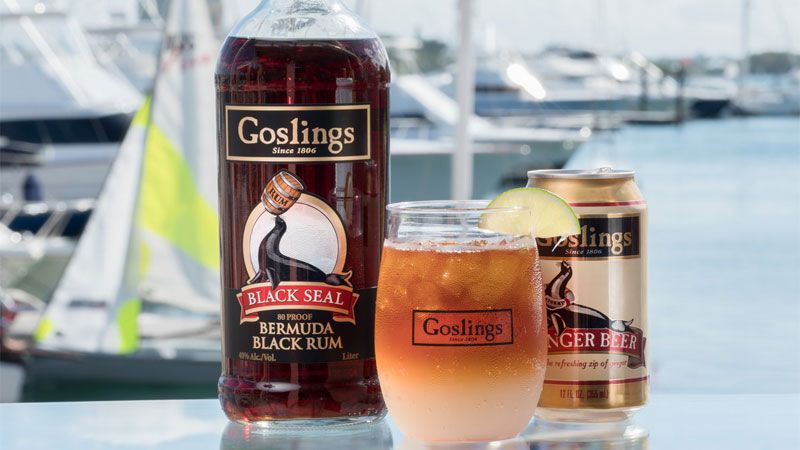The world’s darkest rums shine bright in classic cocktails the Corn ‘N’ Oil and the Dark ‘N’ Stormy. “You can’t make those drinks without a blackstrap rum,” says Shannon Mustipher, rum expert and author of “Tiki: Modern Tropical Cocktails.”
“Blackstrap” is an unofficial rum category whose identity has evolved over time. “Historically, blackstrap was a rum that used a grade of molasses where there was virtually no sugar left,” Mustipher explains. Nowadays, bottles like Cruzan Black Strap, Bacardi Black, Kraken Black, and Goslings Black Seal offer the best examples of the inky contemporary style, also referred to as “black rum,” which is rich in flavor and has a full-bodied mouthfeel.
All rum starts life as sugarcane. On French-speaking Caribbean islands, rum distillers typically use the juice of freshly crushed canes, while on Spanish- and English-speaking isles, distillers favor molasses, the sticky, dark syrup left behind when cane juice evaporates to form sugar crystals.
Cane juice and its byproducts can be boiled three times. The final cycle creates a mineral-rich molasses called blackstrap, which contains the lowest sugar content of any cane product. Compared with the jars of molasses sold in your local grocery store for cooking and baking, blackstrap has a bitter, earthy, salty flavor, and a darker, thicker consistency.

Throughout the Carribbean, few producers continue to use a 100 percent blackstrap base for their rums. Many may still include a portion of the product, though rums labeled “blackstrap” are typically no different in their composition to any other style. The category’s distinct flavor profile — crafted to mimic molasses — is instead achieved by adding sweeteners and flavorings, occasionally blackstrap itself.
As for its midnight color? That, too, is artificial. “[Blackstrap rums] are primarily lighter rums with less age — maybe only two years,” Mustipher says. Producers add caramel coloring to give these rums the appearance of being much older, but in reality, even 50 years aging in barrel might not yield a spirit so dark.
It is this distinctive color, however, that typifies the Corn ‘N’ Oil (a mix of blackstrap, spiced cane juice, lime, and bitters) and the Dark ‘N’ Stormy (a blend of blackstrap rum and ginger beer, famously trademarked by Goslings). Mustipher says blackstrap can also be used as “salt and pepper” to adjust cocktails’ profiles. The rum’s bitter notes help balance sweeter or more sour-leaning drinks, she explains.

A handful of American craft distillers are now embracing blackstrap molasses. Instead of using it to create inky black rums, they include it in the base of their white rums.
For its Blanco Rum, Utah’s Waterpocket Distillery combines blackstrap molasses with refined Turbinado sugar. “We blend them in a mixing tank prior to fermentation,” co-owner Adam Scott tells VinePair. “You have to have a lot of hot water at your distillery if you want to work with blackstrap.” Waterpocket sources its blackstrap from Louisiana and Scott favors the style for its complex, bitter profile and “beautiful” nose.
The ingredient’s price point, too, is advantageous. “The stuff I buy from Louisiana actually costs more to ship to us than it does to buy,” Scott says, noting that refined molasses can be eight to 10 times the cost of blackstrap.
The TTB does not currently list “blackstrap” or “black” as official rum categories. Labeling regulations for rum in general remain vaguer than many other spirits, which can be confusing for consumers and frustrating for producers, who cite better transparency of ingredients and their provenance as being crucial to improving rum’s image.
“There are so many different variables [in rum production] — molasses, Agricole, pot stills, column stills — that I think helping consumers understand the relative merits of those different elements would be to everyone’s benefit,” Marc Farrell, founder and CEO of Ten To One Rum, says. “Oftentimes, that opportunity has been left wanting and we’ve ended up with category confusion,” he adds.
For now, producers can continue to distill regular molasses, add color, and label their products “blackstrap,” while others include actual blackstrap in the production of their white rums and use the very same term. Which of these two styles captures the “true” essence of the category is up to you to decide.
FOUR “BLACKSTRAP” RUMS TO TRY
Cruzan Black Strap: Dark, flavored style from St. Croix. Average price: $18
Goslings Black Seal: Dark, flavored style from Bermuda. Average price: $21
Newport Craft Brewing & Distilling Thomas Tew Widows Walk: Overproof white rum from Rhode Island, USA. Average price: $31
Warship Small Batch Reserved Black Strap: White rum from Oregon, USA. Average price: $33
